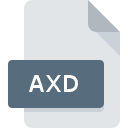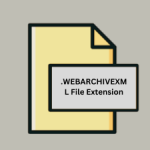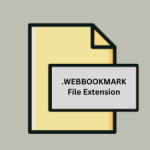.AXD File Extension

What is an AXD file?
The .AXD file extension represents ASP.NET Web Handler files, commonly utilized in web development for managing web requests in an efficient and streamlined manner.
These files play a crucial role in the dynamic handling of web content, acting as intermediaries that process incoming web requests and generate appropriate responses.
More Information.
The initial purpose of .AXD files was to serve as HTTP handlers in ASP.NET applications. Introduced with ASP.NET 1.0, these files were designed to intercept web requests for specific resources, such as images, scripts, or other files, and process them accordingly.
This capability allowed developers to control how resources were accessed and manipulated, leading to enhanced performance and resource management in web applications.
Origin Of This File.
The .AXD file extension is inherently tied to the ASP.NET framework, which was developed by Microsoft as part of its .NET platform.
ASP.NET is a server-side web application framework designed for web development to produce dynamic web pages.
The .AXD files are specifically designed to handle resource requests, making web applications more responsive and efficient.
File Structure Technical Specification.
The .AXD file itself is not a standalone executable but rather a script or handler that is processed by the ASP.NET runtime. It typically includes:
- HTTP Handlers: Code that intercepts and processes HTTP requests for specific resources.
- Configuration Settings: Metadata and settings defined in the web.config file that dictate how the handler operates.
- Resource Management: Logic for accessing, modifying, or serving resources based on the request.
A typical .AXD file is associated with HTTP handler classes written in languages like C# or VB.NET, which are then compiled and executed by the ASP.NET runtime.
How to Convert the File?
Converting .AXD files typically involves transforming the handler logic into a different format or integrating it into a different framework. Here are some common scenarios:
- To Generic Handlers (.ashx): ASP.NET also supports .ashx files, which are similar to .AXD but provide a more straightforward way to create handlers. Converting involves rewriting the handler logic into an .ashx file.
- To MVC Controllers: In ASP.NET MVC, the handler logic can be transferred to controllers and action methods, which provide more structured and testable code.
- To Web API: For RESTful services, converting the handler logic into Web API controllers allows better handling of HTTP requests in a RESTful manner.
The conversion process typically involves:
- Extracting the handler logic from the .AXD file.
- Rewriting the logic into the target format (e.g., .ashx, controller, Web API).
- Updating the configuration settings to reflect the new handler or controller.
Advantages And Disadvantages.
Advantages:
- Efficiency: .AXD files streamline the handling of web requests, reducing the load on web servers and improving response times.
- Security: By controlling resource access through handlers, developers can implement security measures to protect sensitive data.
- Customization: Developers can write custom handlers to manage specific types of requests, providing flexibility in how resources are served.
- Integration: .AXD files integrate seamlessly with other ASP.NET components, making it easier to manage complex web applications.
Disadvantages:
- Complexity: Implementing and managing .AXD files requires a good understanding of ASP.NET and web application architecture.
- Debugging: Debugging issues related to .AXD files can be challenging, especially in large applications with many handlers.
- Maintenance: Keeping track of various handlers and their configurations can become cumbersome over time.
How to Open AXD?
Open In Windows
- Visual Studio: The primary tool for opening and editing .AXD files on Windows is Microsoft Visual Studio. It provides comprehensive support for ASP.NET development.
- Open Visual Studio.
- Navigate to the project containing the .AXD file.
- Right-click on the file and select “Open.”
- Text Editors: For quick edits, text editors like Notepad++ or Visual Studio Code can be used.
- Open the text editor.
- Use the “File” menu to open the .AXD file.
Open In Linux
- MonoDevelop: MonoDevelop is an open-source integrated development environment (IDE) that supports ASP.NET development on Linux.
- Open MonoDevelop.
- Navigate to the project containing the .AXD file.
- Right-click on the file and select “Open.”
- Text Editors: Editors like Visual Studio Code, Sublime Text, or Atom can be used.
- Open the text editor.
- Use the “File” menu to open the .AXD file.
Open In MAC
- Visual Studio for Mac: Microsoft provides a version of Visual Studio for macOS, which supports ASP.NET development.
- Open Visual Studio for Mac.
- Navigate to the project containing the .AXD file.
- Right-click on the file and select “Open.”
- Text Editors: Text editors such as Visual Studio Code, Sublime Text, or Atom can be used.
- Open the text editor.
- Use the “File” menu to open the .AXD file.













